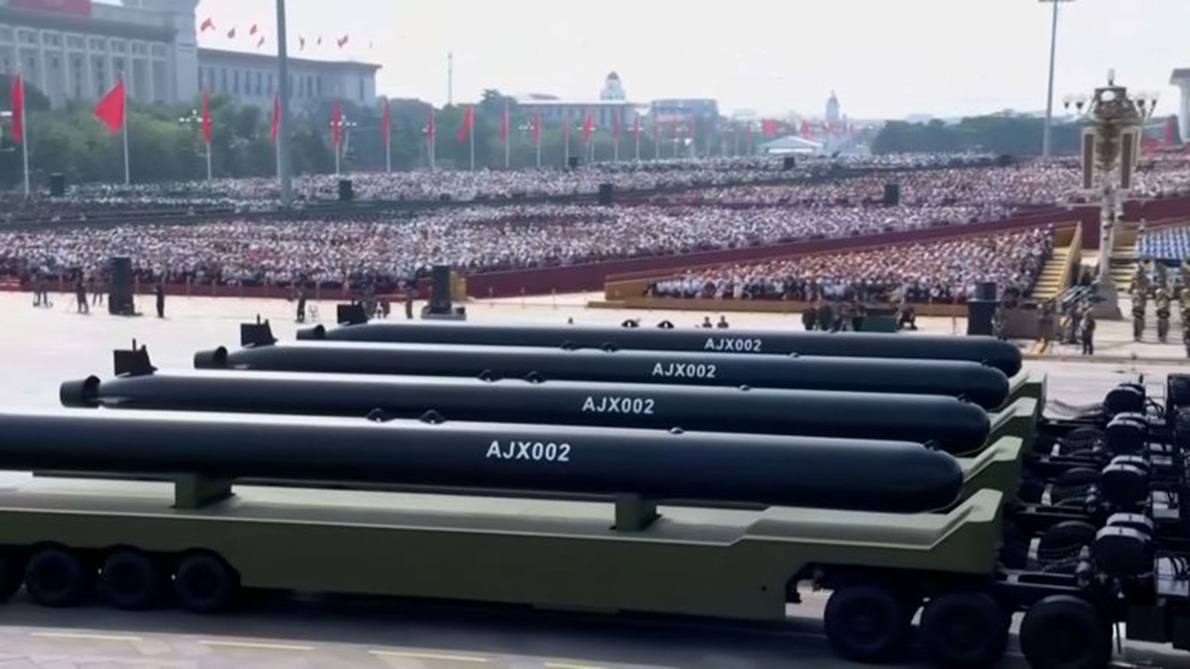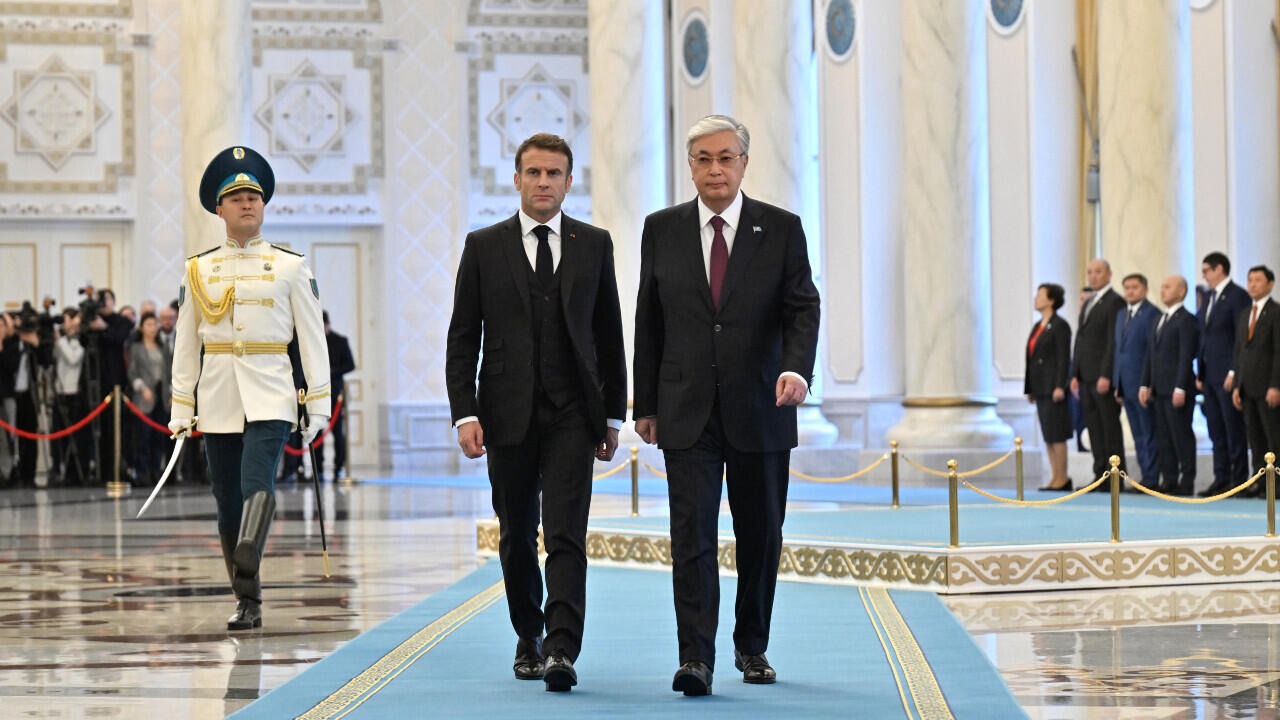This research talks about the chance that the South China Sea (SCS) will lead to armed confrontation between multiple countries vying for control of its islands and waterways. Nations are likely to engage in conflict in this sea and create tensions for Free full use of navigation therefore America with no options needs to join to protect its allies. A military confrontation between America and the People’s Republic of China would lead to far-reaching, long-lasting effects on the world stage because it would involve two nuclear powers. Although recent US initiatives appear to be successful in terms of policy, they have not advanced the resolution of the island conflicts. Particularly in the hotly contested South China Sea areas, China and the US are testing one another. Defying the US in the South China Sea and creating an economic alliance with the US will be significantly more difficult for China to do. For China and the USA to establish and maintain ground as well as foster confidence and cooperation among the countries in the region, this article discusses the geographical, economic, and territorial importance and why America and the Republic of China are so involved.
Introduction
Approximately half of all commercial commodities, including $1.2 trillion in commerce with America, are transported across the waters of Southeast Asia which is home to eight countries including China, the Philippines, and Malaysia. Only the Strait of Hormuz is a more important waterway for oil tanker traffic than the strait named Malacca, which links Sumatra and the Malay Peninsula. South Korea and Japan, among other nations, depend on this oil. Over 500 million people live within a hundred miles of the shores of the South China Sea and the importance of the fishing industry that feeds and employs this population cannot be overstated (Ralf Emmers, 2010). Nations are engaging with each other due to fishing rights in the region, but oil and natural gas can also lead to future political struggles. The Chinese government estimates that the South China Sea sits upon 200 billion barrels of oil and 266 trillion cubic feet of natural gas (John C. Daly, 2012). The estimate from the geological survey is somewhat smaller but still significant by America. Big oil firms like ExxonMobil are still interested despite the dearth of reliable survey data caused by Chinese limitations. Nations such as China, Malaysia, and the Philippines compete over sovereignty and resource rights over islands and reefs, resulting in continuous maritime conflicts and contemporary conflicts sparked by demands for energy and pressures from the global economy.
Research Questions
The paper will attempt to address the following:
- What is the importance of the South China Sea and why is the USA so involved in this region?
- What is the relevance of the Nine-Dashine Dash line and Paracel and Spratly Islands?
- Explaining China’s military advancement in the South China Sea puts strain on the USA’s defence treaties within the region.
- What are China’s and the USA’s policies and strategies in the South China Sea?
Literature Review
The article offers a thorough knowledge talking about various geopolitical processes involving China, the US, and other countries in the region. Iqbal and Ahmad (2023) see the region as a new arena for US-China rivalry. This rivalry echoes the Cold War and affects regional balance and world politics. Munir and Sajjad (2022) look at how China and the US try to shift power in the South China Sea. They focus on military moves and diplomatic work. Akinga Umar and Yusuf (2023) stress how the SCS matters for world politics. They point to energy sources and sea trade routes as key factors. Britto’s (2021) study talks about the strategies and policies used by China to push back against America. He weighs China’s military strength and what it means for the area. Tsirbas (2016) explores land claims in the region. He digs into the disputed Nine-Dash Line and its past legal fights. Scobell (2018) probes the bigger effects of the US-China rivalry in the SCS. He zeros in on security worries and diplomatic tactics. These works shed light on the many sides of the SCS issue. They cover money interests, world power shifts, military tensions, and land disputes.
Methodology
This study employs descriptive and qualitative research approaches. The article draws its content from primary and secondary sources, with a dash of tertiary data thrown in for good measure. The researchers didn’t skimp on digging up info from various places. The study article’s relevance and current position are guaranteed by the utilization of sources that were published between the years 2010 and 2024. While taking into account the standing and background of all the source platforms and writers, respectively, and acknowledgement of each research paper is monitored to guarantee the credibility and authenticity taken from the sources.
Strategic Importance of SCS
One of the oceans encircling the west side of the Pacific Ocean’s edge is the South Asia Sea. It is geographically surrounded by 7 nations and has an estimated land area of 3,500,000 square kilometres. To the north is the coast of southern China’s mainland; Westward lies the Indochinese region; eastwards are Taiwanese territories and the Philippines’ northwest area, which includes the island coming under it.; and southwards are the island of Borne eastern Sumatra, and the absorption of the Bangka Belitung Islands. Because they connect the Pacific Ocean to other seas and straits. At the same time, it is necessary from the point of view of strategic and financial, as a result of an estimated US $3 trillion worth of goods transiting through that route a year. Nevertheless, it also forms an immense point of natural resource endowment and has plenty of fisheries that are exceedingly significant for SEA countries’ security food.
Major features of this region include a variety of small groups of islands, banks, reefs and many more. These are divided into three major groups: the Scarborough Shoal, Macclesfield Bank, and the Sprats, Paracels, and Pescadores Pratas. In total, these groups of islands, reefs, and shoals are more than two hundred. Taiwan, Vietnam, Philippines, Malaysia, Brunei, China, Indonesia, and some of the others have staked claim for these extremely disputed regions. As for the aspects concerning the overlapping territorial claims with the nine-dash line, China is facing a large number of conflicts with some of its neighbours, especially with Taiwan.
The South China Sea packs a geopolitical punch due to its prime spot and rich resources. It handles $1.2 trillion of U.S. trade. East Asian nations also rely on it for Persian Gulf energy imports. Many believe controlling this sea holds the key to East Asia’s future. China’s aggressive territorial moves since 2010 have sparked tensions. The U.S. now sees free navigation as a top priority. In their conflict with China in the South China Sea, Vietnam and the Philippines have also tried to establish a “strategic alliance” with Japan. (John M. Richardson, 2019)
To increase its power and discourage American participation in the area, China has been militarizing islands like Mischief and Subi Reefs. China has been strengthening its defence capabilities, and one of its main ballistic missile submarine bases is the Spratly Islands. This region had greater importance among the nations and significance, this waterbody is a hotspot for geopolitical conflict and military activity.
America’s Involvement In the South China Sea.
South China Sea’s strategic significance and possible fuel reserves, China, Southeast Asian nations, and the US have long been at odds over this area. South China Sea territory is claimed by China and five other nations. China is enraged by American ship traffic through these waterways, which it considers as strategically important This approach, on the other hand, incensed China. Furthermore, a number of elite Chinese leaders appeared to perceive the South China Sea as an “essential interest” that is as impervious as Taiwan and Tibet—rhetoric that China has lately stifled but not eliminated (Haroon Iqbal, Israr Ahmad, 2023).
Energy is getting increasingly important to all sides in the Disputed SCS. Tension with Beijing has somewhat decreased because of the Obama administration’s recommendation for a robust but constrained South China Sea strategy. Nevertheless, as ASEAN Countries seek sustenance outside of ASEAN, America will have to perform a greater role in the debate. India, a key ally of the U. S., is becoming progressively enmeshed in the SCS, with China maintaining that its claims are unattainable (Kurlantzick, J. 2011).
Additionally, the US has improved its command over the world’s waters and continues to back missions pertaining to freedom of navigation. China would inevitably run into problems as a result of the growing US maritime industry. The US is involved because its partners and allies in the pact want assistance in convincing China, a massive and close power in Asia, to adopt international norms with other Indo-Pacific nations rather than using its newly developed economic and military might to impose its will on its neighbours and friends. The US also wants to ensure that trade routes and lines of communication are preserved on these crucial waterways, which transport almost two-thirds of global trade and a significant proportion of the world’s energy resources to markets, in accordance with the principle of freedom of movement (Bower, E. Z. 2015)
The Nine-Dash Line Concerning Uniter Nations Convention on the Law of the Sea
In 1948 the map of the South China Sea had eleven U-shaped lines taking a major part of the region. Later the map was changed, and nine lines were drawn instead of 11 hence the name. The Chinese were the first to acknowledge this line. China builds its claims around the nine-dash line which covers 80–90% of the waters in question. The nine-dash line confirms China’s ownership of sea areas like the continental shelf territorial sea, and EEZ and its control over places that the tide reaches. China claims that while it follows UNCLOS, this is not the right law to use in this situation (Tsirbas M. 2016.)
Established by the Convention on the Law of the Sea in 1982, it followed a wide regulatory framework of the world’s seas, and oceans. By setting guidelines, governments can’t violate each other’s marine rights and claims. Law enforcement and worldwide marine utilization of resources are the two goals of this agreement. The sea and marine beds that extend to this region are well thought out in a country’s Exclusive Economic Zone (EEZ), and that country can deed these seawaters for commercial determinations. (Haroon Iqbal, Israr Ahmad, 2023)
Paracel Islands
A group of thirty or so islands called the Paracel Islands are situated 350 km away from China. After a brief conflict in 1974, Vietnam lost these islands to China, which is currently in control of them. North and South Vietnam were created out of the division of Vietnam. Supporters of China’s sea claims against South Vietnam were from North Vietnam. However, after reunifying in 1975, Vietnam began to defend its sea claims. While many experts believe that no single nation can claim the Paracels, Vietnam supports its claim with the history of the Nguyen dynasty’s control from at least the 17th century when the islands were unclaimed. (Britto A. 2021)
Spratly Islands
Approximately 158,000 square miles of ocean surround the fourteen islands that make up the Spratly Islands. There is nobody who resides there. Tension arises from disputes over ownership of the islands among six countries: China, Taiwan, Philippines, Malaysia, Brunei and Vietnam.
Additionally, China’s Nine Dash Line denotes the region in which the Spratly Islands lie. China controls seven reefs there and bases its ownership on historical rights, as Britto noted in 2021. China argues it has owned the islands since the second century B.C. and has defended its rights to them, which has led to their use and development, the islands were claimed as part of China and were put under the control of the Chinese Government.
China’s Military Expansion a Threat to U.S Allies
The Americans should leave the South China Sea and Western Pacific, as requested by the Chinese because America is concerned that the Chinese might establish their military power in the sea to get hold of the wealth that the region contains. China claims “indisputable authority” over the region, but other claimants, including Vietnam, Brunei, Malaysia, and the Philippines, have the decree on their side (Haroon Iqbal and Israr Ahmad, 2023).
The South China Sea has been demonstrated to be a critical region by the naval power of the Chinese military, obstructing Taiwan from displaying its strength to India and America. The phrase “Indo-Pacific” has taken on diverse meanings among different countries. Its designated territory spans a region from the east coast of Africa to the west coast of the United States. Since China’s rise as a new financial power, the importance of this important global trade route to the US has increased. As a result, the US seeks to establish a dominating spot in the area to offset China’s rising influence (Samo, 2020).
In the late 1980s, while addressing local conflicts and land disagreements Chinese officials began to plan for the future. They aimed to build a navy and air force to manage the ocean and protect distant maritime zones. When the US became a challenge, Beijing shifted its strategy to deny sea access. This strategy aimed to prevent the US military from navigating or taking charge of waters close to China (Doshi 2021). Since Trump was elected in 2016, tensions between China and the US have impacted the political, security, economic, ideological, and scientific domains. Without causing ill will, the subtle differences between Washington and Beijing have begun to alter the global scene, posing philosophical queries about the extent of Chinese influence abroad. Few observers are conflicted about the future consequences of China’s rising worldwide influence, as the Chinese Communist Party (CCP) is suspected of stepping up attempts to endorse Beijing’s severe principles (Bachulska, 2019). America has been always trying to stop its rival in Southeast Asia from spreading its influence in the world, by placing sanctions.
China’s Plans to Control the South China Sea
South China Sea being an important and financial region is slowly turning into a special territory and waterbody for 2 Superpowers in the world. Similarly, to America’s previous interest in the Caribbean, China is interested in the SCS. China at present is America’s main rival on the world stage and it wants to rule the South China Sea, a vital commerce corridor where “More than 50% of the oil tankers of the world pass through this Sea” (Usmani, Dr M. 2015). This region is said to contain a vast quantity of oil and a large portion of natural gas. If China controlled the waterbody, its naval force along with its influence would grow. China has cut off the communication lines of Nations like South Korea and Japan. South Korea and Japan are firm allies of the US. This is a straight threat to the US. In the future when China develops an economic giant then it will target US associates through the South China Sea (Goldstein, Lyle J. 2019).
“China’s island-building in the South China Sea i.e., aka land-reclamation and consequent base construction at positions where the Spratly Islands and Paracel islands can be controlled easily raised concerns among US policymakers” (Dolven, Ben. 2016).
To minimize US intervention, China favours bilateral conflict resolution in the SCS. In Chinese media, US naval actions in the area are frequently portrayed as interventions intended to sour relations with US allies such as Japan. To give China more clout in bilateral talks, this tactic aims to include regional players. So long as the US is perceived as having needless and troublesome participation in the SCS, China stands to gain.
U.S. Policy to Tackle China’s Control over South China Sea
The world’s most powerful and developed nation has serious concerns about the South China Sea, which grants one nation a huge advantage for both strategic and economic reasons. Endowed with abundant materials, Southeast Asia harbours significant ports and functions as an essential commerce pathway. America is focusing on gaining allies with nations like Vietnam, Taiwan, South Korea, and Japan to stop Chinese influence. “US involvement ensures regional stability, opens trade routes, and supports allies against potential Chinese hegemony. In the post-Cold War passé, the US is intensely worried about countering new challengers like China. In the South China Sea, the US pursues chances to hostage China” (Edwards, Christian. 2018). America pursues its security interests through alliances and treaties such as the Taiwan Relations Act and defence agreements with its Asia allies. In the region, Chinese military advances are seen, including bases and artificial islands, that put US influence to the test and make military operations more difficult, especially when it comes to Taiwan. During conflicts, US interests are further jeopardized by China’s strategic deterrent forces, which include nuclear-powered ballistic submarines. US Department of Defense defines freedom of navigation as it, “Includes more than the mere freedom of commercial vessels to transit through international waterways, while not a defined term under international law, the Department uses freedom of the seas to mean all of the rights, freedoms, and lawful uses of the sea and airspace, including for military ships and aircraft, recognized under international law” (DODefense August 2015).
Approximately $3.4 trillion worth of international shipping passes through the SCS every year, making it essential for global trade as well. US Department of Defense stated that “the South China Sea plays an important role in security considerations across East Asia because Northeast Asia relies heavily on the flow oil and commerce through South China Sea shipping lanes, including more than 80 percent of the crude oil (flowing) to Japan, South Korea, and Taiwan” (Edwards, Christian. 2018). Any disruption in this region could impact global oil prices and the US’s role in the international market. Thus, maintaining stability and open navigation in the SCS is essential for America due to many reasons.
Conclusion
The South China Sea dispute, which encompasses disputes over maritime law between the nations belonging to the region, is a complicated subject that coexists with a power struggle between the US and China. China has long held territorial power for nearly the entire waterbody, including its island chains, rocks, reefs, and shoals, as well as the waters that encircle them. In addition, China engages in low-key provocations against disputants by occupying marine features, fortifying islands, and barring the entry of military and civilian vessels from other states. China intends to resolve maritime claims through the expeditious negotiation of “legal guidelines,” which will be legally binding. This would be the greatest degree of territorial expansionism since Imperial Japan if China is able to successfully enforce its grip in this region. In addition, America has actively pursued engagement in conflicts by giving focus to a well-structured world order, carrying out military drills and FONOPs inside the permissive parameters of UNCLOS, and aiding regional friends and security partners. To prevent the situation from spiralling out of control and from China viewing it as a “long-term contest with the United States,” U.S. policy in the area needs to be compliant with international law, the code of conduct, and other agreements that the two nations have signed. Regarding the Sino-US great-power rivalry, China sees free full navigation of the sea aimed at this region as worrying. In the context of grand-strategy competition, the United States cites the disagreements as justification for retaining and increasing its military presence in the area. The equal navigation of the sea directed at the South China Sea is concerning to China in light of the Sino-U.S. great-power competition. The US uses the differences as a rationale for keeping and growing its military presence in the region when it comes to grand-strategy rivalry. In order to convey to China that it will not be removing its military or its influence from this region anytime soon, America must act in an unshakable, decisive, and clear manner in this region.
Title image courtesy: Edubaba
Disclaimer: The views and opinions expressed by the author do not necessarily reflect the views of the Government of India and Defence Research and Studies

References
- Akinga, A. Y., Umar, A. Y., & Yusuf, D. J. 2023. “The strategic importance of South China sea to international geopolitics.” ACADEMICIA: An International Multidisciplinary Research Journal, 13(1), 24-34
- Britto, A. 2021, “South China Sea Hegemony: Does China have the capacity to dominate the South China Sea amidst US presence in the region?”
- Bower, E. Z. 2015, June 02, “ A look at the US stance on the South China Sea dispute.”
- Burgess, S. 2020, “Confronting China’s maritime expansion in the South China Sea: A collective action problem.” Journal of Indo-Pacific Affairs. US Department of Defense. 5. Bachulska, A. 2019, November 11. The consequences of Sino-American rivalry for third
countries: Poland and the 5G dilemma. Retrieved from theasiadialogue.com 6. DODefense. August 2015, “ Asia-Pacific Maritime Security Strategy.” Washington, DC:
Department of Defense. - Doshi, R. 2021. “The Long Game; China’s grand strategy to displace American order.” New York: Oxford University Press.
- Dolven, Ben. 2016, “Chinese Land Reclamation in the South China Sea: Implications and Policy Options.” CRS Report R44072.
- Edwards, Christian. 2018, “The South China Sea Is Fabled for Its Hidden Energy Reserves and China Wants to Block Outsiders Like the US from Finding Them.” 10. Hongbin, D., & Ullah, I. 2022. “The South China Sea’s Nine Dash Line:Key Disputes and China’s Historical Rights Claims.” Journal of Pakistan-China Studies (JPCS), 3(1), 67-86.
- Hartmann, M. W. “Prevention of US-China armed conflict over South China Sea territorial disputes.” (n.d.). National Defense University Joint Forces Staff College, Joint Advanced Warfighting School.
- Hinck, J. (2021). “US response to China’s aggression in the South China Sea and overall aim of information dominance. Journal of Indo-Pacific Affairs.” US Department of Defense.
- Iqbal, H., & Ahmad, I. (2023). “The New Cold War: Sino-US Rivalry in the South China Sea and Repercussions on the Region.” Journal of Social Sciences Review, 3(1), 413-421.
- John M. Richardson, “Maintaining Maritime Superiority” US Chief of Naval Operations, on YouTube, Lecture at Atlantic Council’s Scowcroft Center. / Feb 2019, minutes 38:22– 41:25; 49:39–52:00.
- John C. Daly, 20 February 2012, “China’s Benign Foreign Policy Image at Odds with South China Sea Stance,” Refinery News.
- Kurlantzick, J. (2011, October 07). “Growing U.S. Role in the South China Sea.” Retrieved from cfr.org.com
- Munir, T., & Sajjad, N. (2022). “Strategic rebalancing: Sino-US interplay in the South China Sea.” Fair East Publishers.
- Ralf Emmers, 2010, “Geopolitics and Maritime Territorial Disputes in East Asia” (London; New York: Routledge)
- Samo, S. H. (2020, June 06). “Indo-Pacific domination of the US and China’s response.” Retrieved from theauthenticpost.com
- Scobell, A. (2018). “The South China Sea and US-China Rivalry. Political Science Quarterly, 133(2), 199-224.
- Tsirbas, M. (2016, June 02). “What Does the Nine Dash Line Actually Mean?” Retrieved from the diplomat. Com
- Usmani, Dr M. 2015. “South China Sea conflict.” Jahangir World Times 9: 28,29.
- Wiegand, K. E., & Ryou-Ellison, H. J. (2020). “US and Chinese strategies, international law, and the South China Sea”. Journal of Peace and War Studies, 2(1), 49-68.






